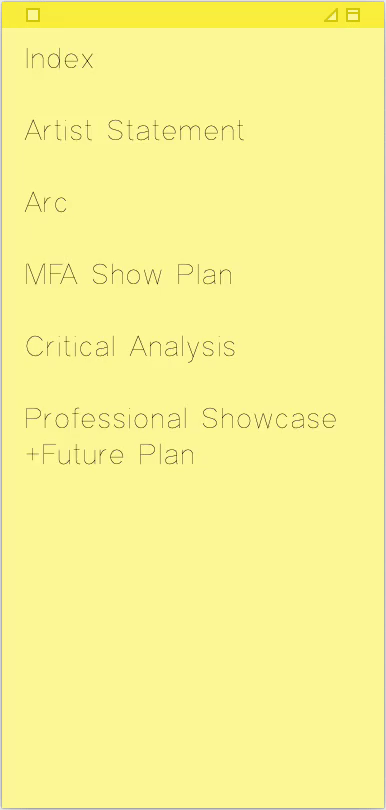




Keywords in this section with contexts:
The specificity of different medium (ongoing experiment)
Juxtaposition: Editing the images by operating different medium
Grosse Fatigue (2013), Camille Henrot


The Fencing Goose (2019)

Juxtaposition: Editing the images by operating different medium
French artist Camille Henrot’s video work Grosse Fatigue (2013) made me rethink the different ways of superimposing images. Camille Henrot layered an infinite mass of information through a rapid-fire cascade of images across a computer screen unveiling the treasures hidden away in the prestigious collections of the Smithsonian Institution in Washington, D.C, which remains excess in the span of thirteen minutes to unfold the story of the creation of the universe.


Different from my layering strategies for my still images works, In The Fencing Goose (2019), I used the mobile lazy stand to superimpose the 7-inch flat screen with the moving image of a goose stretching its neck to peck the food with the 19-inch LCD screen displaying the fencing athlete who is suddenly attacking the opponent.
In Pecking fingers and picking pigeons (2019), I displayed two pieces of found moving images on two different small screens at the same time and put them back and forth at an unobtrusive corner of the space, so that the movements of pecking and picking corresponds to each other while they are also the separate image-object.


The specificity of different medium
(ongoing experiment)
In the process of constantly discovering different visual mediums, I am more and more interested in how to compress multi-dimensional reality information into planar image-based information and then convert it back into the three-dimensional space.
After my experiments on static images and distorting moving images into three-dimensional space through projection mapping, I started trying to reevaluate the material specificity of the digital display, rather than treat it incidentally as an efficient terminal for delivering images.
I bought several bezel-less ultra-slim display screens for replacement from a Chinese manufacturer, as well as the dual screens removed from the VR headset.


I think her ways of seizing the success information flow and understanding people’s filmic way of seeing images in multiples in the contemporary world are highly related to my practice. What’s different is that I “edit” the interconnection of movements in the images through the intervention of different types of digital displays and bracket accessories rather than editing the content on the screen in the video editing software. The bezel-less and ultra-slim features make the flat screens reduce the sense of "device", which is very similar to the Quicktime player window in the computer, but at the same time becomes the physical "body" of the image.

Pecking fingers and picking pigeons (2019)



